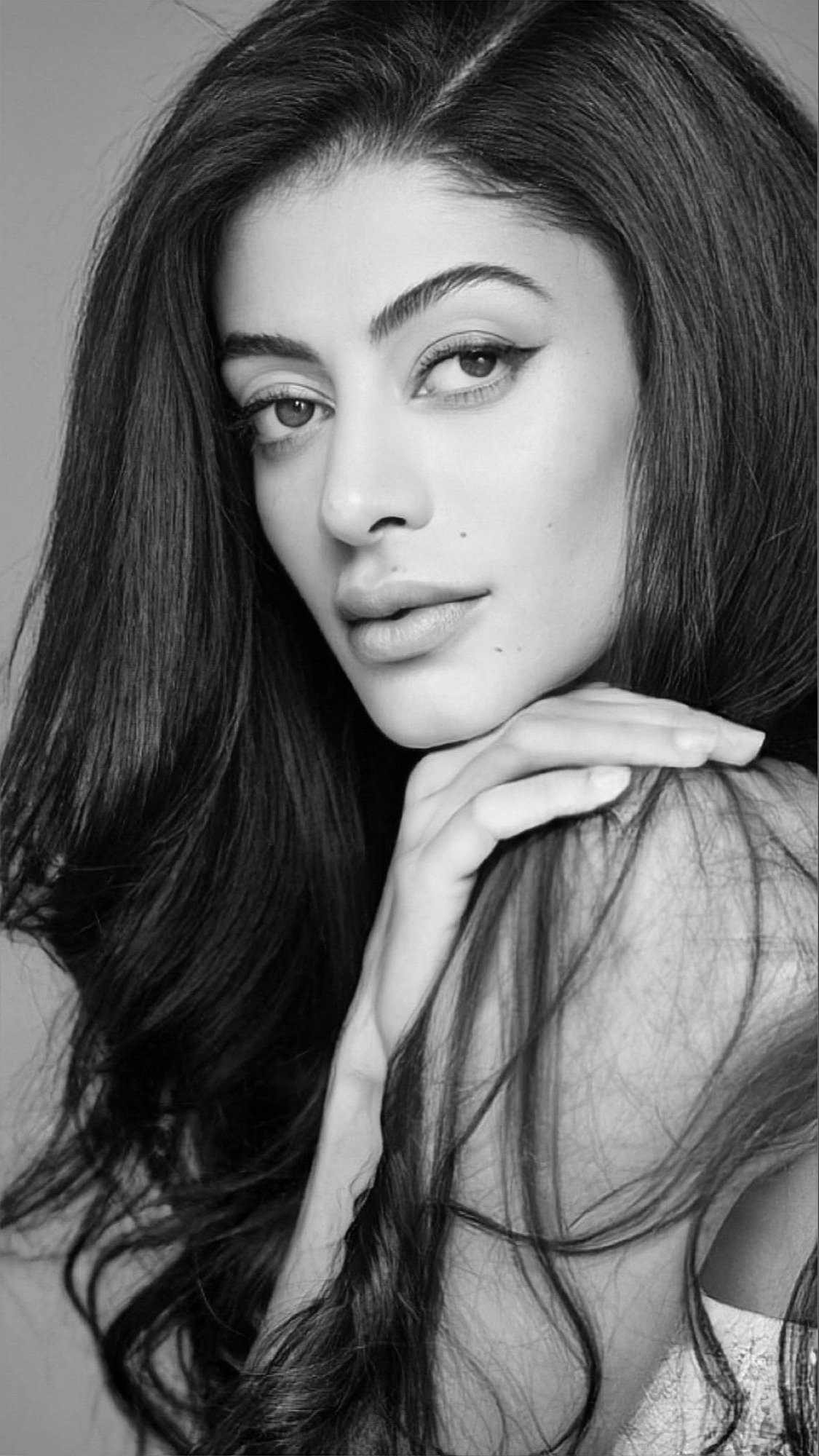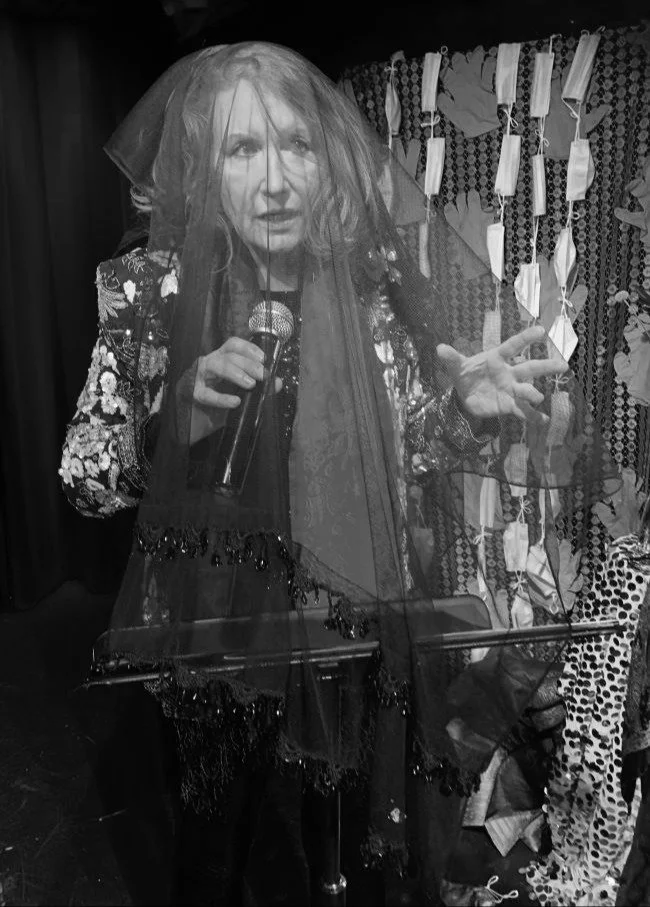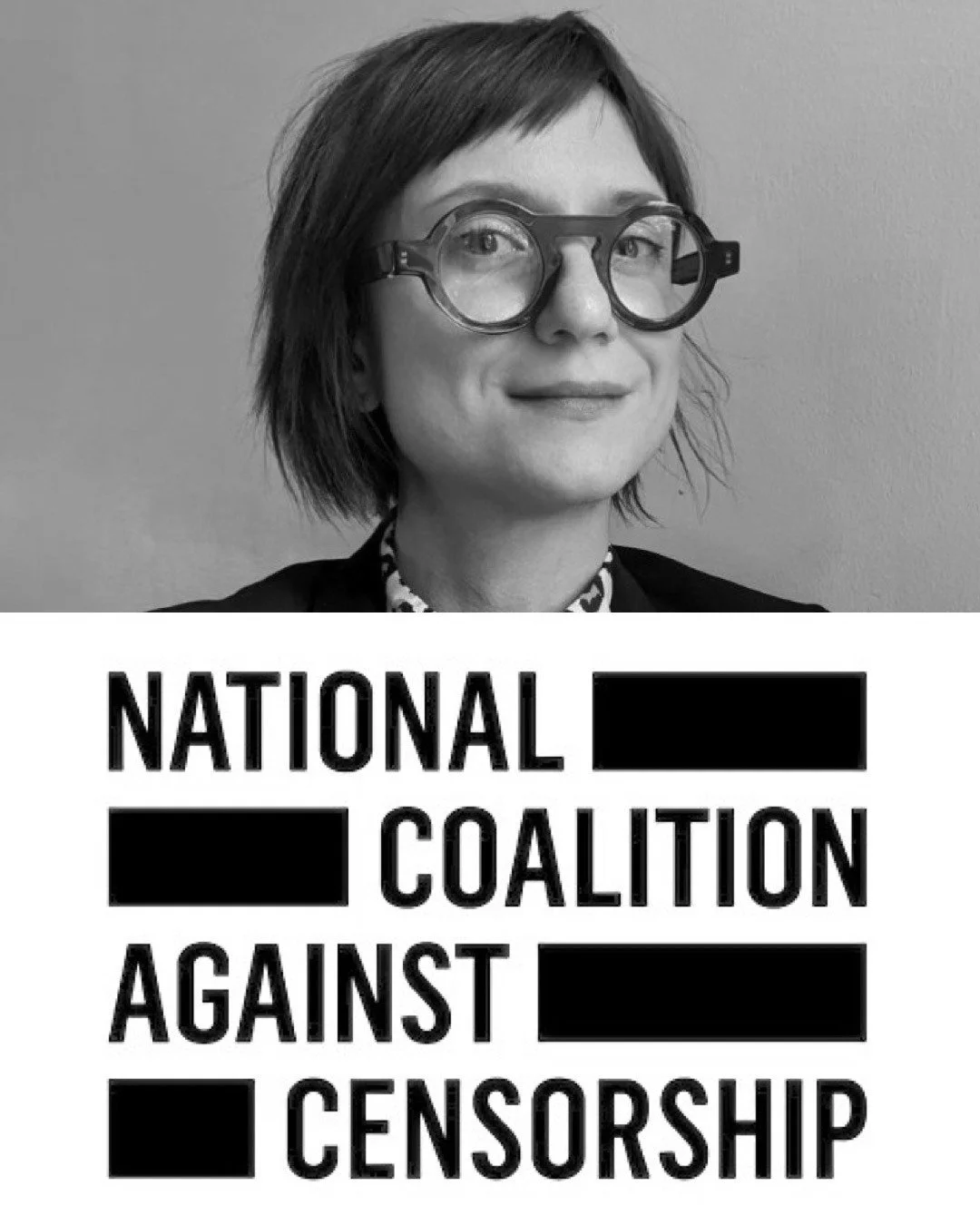DANIELLE SEEWALKER on her cancelled residency over her pro-Palestine activism & the resulting ACLU lawsuit
Danielle SeeWalker is Húŋkpapȟa Lakȟóta and citizen of the Standing Rock Sioux Tribe in North Dakota. She is a fine artist, muralist, writer, activist, and boymom of two, based in Denver, Colorado. Her visual artwork often incorporates the use of mixed media and experimentation while incorporating traditional Native American materials, scenes, and messaging.
Her artwork pays homage to her identity as a Lakȟóta wíŋyaŋ (woman) and her passion to redirect the narrative to an accurate and insightful representation of contemporary Native America while still acknowledging historical events.
In this interview, SeeWalker talks about her Vail, Colorado summer residency, which was canceled after complaints by community members about a painting she created of a Native woman wearing a keffiyeh entitled “G is for Genocide,” and the lawsuit the ACLU has filed against Vail on her behalf.
Interview by Logan Royce Beitmen
The ACLU just announced that they’re suing the town of Vail, Colorado, on your behalf. Vail accepted you into an artist residency program and then canceled it. Can you tell us about the residency and why it was canceled?
Back in January, I had gotten an email from the Art in Public Places director of Vail. She said she had been following my artwork for a long time, and she had brought it to the board and proposed inviting me to come and do a residency there. And they agreed. I had no idea Vail offered that kind of program. What I did know of Vail was that it doesn't have a lot of diversity. So, when Molly [Eppard], the Art in Public Places coordinator I had been conversing about the residency with, expressed that part of the idea of the residency was to have more diversity in their programming, that really perked my ears up. I thought, okay, this could be a really cool opportunity to go into a community that probably doesn’t know much about Native American cultures and histories and be able to create art and have that cultural exchange.
So, fast forward, we had a lot of conversations and I ultimately agreed to do the residency, which was slated for June of this year. I had done a site visit there and looked at the wall where I was going to do a mural. We started planning a robust residency to include me doing workshops in the community. I was going to do an exhibition. I was going to be part of a symposium. It was on track to be a really cool opportunity. Meanwhile, as this planning's going on for months, I am an artist who has a lot of other projects going on simultaneously. I was part of a group exhibition for Women's History Month in March, and I created a piece for that exhibition of a Native American woman wearing a keffiyeh.
That’s the piece titled “G is for Genocide.”
Yes. During that time, there were a lot of images in the media of Palestinians being killed and children being harmed, and a lot of pleas for help from people in Gaza. I started realizing there's a lot of parallels between what's happening to Palestinians there and what happened to my culture. That’s what inspired this piece. It’s a Native person having solidarity, wearing a keffiyeh, and drawing those parallels.
That piece was created for a show in March. Then, in May, the town of Vail publicly announced that I was their selected artist in residence for the year. They put it out as a press release and on their website. Somebody saw the announcement—I’m just learning it was the rabbi of a local synagogue—and maybe he was curious about who I was, so he went on my Instagram and my website and saw that I had posted that piece back in March. He felt very offended by it, I guess, and brought it to the town's attention and said, Hey, why have you selected this person? You should probably think twice about this person being the artist in residence. I don't know exactly what was said. But ultimately, after he spoke to them, the town of Vail called me and canceled my residency.
So, that cancellation was done based on one person’s judgment of one art piece I had done months prior for a totally different exhibition that had nothing to do with the town of Vail. So, that's where we're at with the ACLU, recognizing that this is a government entity violating my constitutional rights, specifically my freedom of speech.
“G is for Genocide” (2024), acrylic, aerosol, and oil stick on canvas, 18 x 24 inches
The National Coalition Against Censorship has spoken out, as well.
When the cancellation occurred, my immediate reaction was shock and disbelief. I am an activist and do a lot of work in my community. I have for a long time. So, I reached out to the media. I'm not going to just let this be. I'm going to talk about it. So, there was a lot of media around the cancellation back in May, and a lot of organizations globally heard about it, including the National Coalition Against Censorship. They reached out and said, wow, this is crazy! They were creating a map of artists around the country who had been specifically censored for speaking out about this war. So, they asked if they could highlight my situation in their project.
You mentioned you've been politically active for a long time. I know you're Lakota Sioux and a member of the Standing Rock community, and you were involved in the very famous protest against the Dakota Access Pipeline. Was that one of the first times you were involved in a major political action?
No, I don't think so. I mean, if you really think about it, my very existence is a political existence. I'm not even supposed to be here. Native Americans have continued to fight for their existence, and we still continue to fight for a seat at the table, to not be censored, and to have the same rights as everybody else. The Dakota Access Pipeline just happened to be in my homeland, where my family lives, so, yeah, I was involved in that just innately, because that's where I grew up. But I've been standing up for Native American rights for a long time.
As you mentioned earlier, you see significant parallels between the genocide against Native Americans here and what's happening in Gaza. Can you talk about some of those parallels?
Yeah, I was just reading an article yesterday about how many Palestinians have been displaced. And that's the foundation of a lot of Native American issues—forced removal and being displaced, being forced onto reservations, being punished and murdered just based on who you are and where you were born.
We’ve seen sexual violence used in this war, as well, and you've done art about sexual violence against Native people.
Yeah, all the statistics on Native people in terms of domestic assault, domestic violence, sexual abuse, murder, rape—all those statistics are disproportionately much higher for Native women than for any other population group in the country. Many women and children are missing or murdered—MMIR, we call it—Missing and Murdered Indigenous Relatives. I haven't looked at the statistics for what’s going on in Gaza as it relates to that, but I wouldn’t be surprised if there's a lot of parallels there, too.
Let’s talk about your art visually. Even though you're dealing with very serious tragedies in your work, you often use a lot of bright colors and patterns, and there’s a lot of beauty. How do you balance tragedy and joy in your work?
I think what people see in the forefront is a lot of the trauma, the atrocities, and the not-so-good statistics as they relate to Native people and our communities. But I wish what would be highlighted would be all the beauty and the resilience and the celebration and the richness of culture and community that never gets told. So, I try to juxtapose those stories in my art and contrast the atrocity with stories of resilience and positivity. There’s a balance.
Outside of my painting practice, I’ve also been working on a project called The Red Road Project for over a decade with my best friend. It's a photo project highlighting people in Indian country—whether they're on a reservation, or living in an urban area like LA or Denver, or everywhere in between—highlighting these stories of resilience and all the great things that they’re doing.
In terms of color, I am definitely a colorist. I get very inspired by color palettes and different colors that I see in the world.
Čhaŋté Imáyaču (You Took My Heart) 48” x 48” Acrylic, aerosol, oil stick on canvas
“Uncle Giving Directions” 30” x 30” Acrylic on canvas
Photographs from The Red Road Project
One artist you've been inspired by is T.C. Cannon, who is also a great colorist. Do you remember when you first encountered his work and what drew you to it?
I started seeing a lot of his artwork in my early twenties. And, of course, what drew me to it was the colors.
I also loved how he portrayed Native life in such an expressionistic way. It wasn't what you typically see—a realistic painting of a chief on a horse overlooking a river. It was his own expression of what Native people are, and it was so far ahead of its time, in terms of how Native people were used to seeing our lives depicted in art. That's what I really loved about it.
You make public art in the form of murals, and you also make wearable art. Why do you think it's important to put art into different contexts beyond just galleries and museums?
Well, number one, if I do the same thing over and over again, I get bored. So, I like to experiment and try new things. I got into doing mural work in 2020, during the pandemic, and I haven't stopped since.
I realize the power of what public art can do, and it’s very accessible. When I look back at my own life, I remember thinking that going into a gallery or museum was very intimidating. I don’t now, obviously. But I think about other people within my own community who may not feel comfortable walking into a gallery or a museum to enjoy art, even if they really wish they could. Public murals are accessible. They’re not discriminatory.
“LANDBACK” Denver, CO
“DAKHÓTA ANCESTORS” St. Paul, MN
You’ve also been involved in revitalizing some indigenous craft traditions, including parfleche bags. Can you talk about that?
It's really important to me to keep our ancient art alive. Parfleche is definitely something my ancestors have been doing for hundreds of years, using rawhide. It's a very tough material and a very versatile material. Quillwork is another art that I'm trying to understand and teach myself. It's a dying art form, using porcupine quills and doing quillwork. It’s important for me to keep these ancient arts alive but bring them into contemporary times. It doesn't have to look like it did 200 years ago. I can utilize a new color palette or apply the techniques in a different way. I fuse the past with the present to make something new.
You've even taken vintage Louis Vuitton bags and transformed them into parfleche bags, which I think is so interesting. It's like two cultures colliding in one object.
Yes, and there's a little bit of history about that. A lot of French fur traders came into the Dakotas during the 1800s. And Louis Vuitton is a French brand. Their whole brand is based on travel and luggage and travel bags. My people at that very same time were very migratory, very nomadic. We would follow the buffalo. So, wherever the buffalo went, we would pack up all our belongings and follow them. Hence, why we lived in teepees. Teepees were very easy to fold up and take with us. But we also needed to have luggage to store our stuff. And that's what parfleche originally was—little boxes or cases that you could put your stuff in and take with you. I thought it was very interesting how these two cultures were doing the exact same thing—in two completely different ways, with different types of materials, but it was simultaneous.
So, coming back to the censorship and discrimination that's happened to you—a lot of artists nowadays are facing censorship for speaking out politically. Some of them are afraid that if they talk about what's happening to them, it might jeopardize their careers even more. How have you found the courage to keep speaking up and fighting back?
I guess it's just something that's innate in me. I come from a family lineage of people who spoke up. My dad even told me once, Danielle, if you don't speak up, nobody's going to do it for you. And I pocketed that advice, and I've carried it with me.
I'm not creating art to have some magnificent career. I’m not creating art for any motivation other than to just put something out into the world that I feel good about. So, what this all means to me, the very principle, is that I have to continue doing the right thing in all facets of my life. Right now, the right thing for me to be doing is to be speaking up about the injustice of censorship. Not only as an artist and as a human, but as a Native American woman. I'm tired of generation after generation of my people being censored and silenced, not given a seat at the table, not given the same rights as everybody else. This is just another example of that. So, it's really not about me. It’s about doing this for Native people in general.
Logan Royce Beitmen is a writer and curator.
Did you like what you read here? Please support our aim of providing diverse, independent, and in-depth coverage of arts, culture, and activism.













